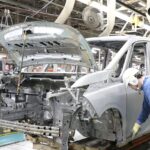WHO certifies Egypt as being malaria-free

After 100 years of concerted efforts
The World Health Organization (WHO) has officially certified Egypt as malaria-free, a monumental achievement for a nation of over 100 million inhabitants. This milestone, the result of nearly a century of efforts by the Egyptian government and its people, marks a significant victory in the global fight against malaria.
“Malaria is as old as Egyptian civilisation itself, but the disease that plagued pharaohs now belongs to its history and not its future,” stated Dr Tedros Adhanom Ghebreyesus, WHO Director-General.
“This certification is historic and a testament to the commitment of the Egyptian people and government to rid themselves of this ancient scourge. I congratulate Egypt on this achievement, which inspires other countries in the region.”
Egypt is now the third country in the WHO Eastern Mediterranean Region to receive this certification, joining the ranks of the United Arab Emirates and Morocco. It is the first such certification since 2010. Globally, 44 countries and one territory have achieved this significant milestone.
“Receiving the malaria elimination certificate today is not the end of the journey but the beginning of a new phase,” said Dr Khaled Abdel Ghaffar, Deputy Prime Minister of Egypt. “We must work tirelessly to sustain our achievement by maintaining high standards for surveillance, diagnosis, treatment, and integrated vector management.”
Proven capability
WHO grants certification of malaria elimination when a country can demonstrate, beyond reasonable doubt, that indigenous malaria transmission has been interrupted nationwide for three consecutive years. Egypt has successfully met this criterion, showcasing its capability to prevent any re-establishment of transmission.
Malaria has been present in Egypt since at least 4000 B.C.E., with genetic evidence found in mummies such as Tutankhamun. Efforts to combat the disease began in the 1920s, which included prohibiting the cultivation of rice and other crops near residential areas. By 1930, malaria was designated a notifiable disease, establishing the country’s first malaria control station.
By 1942, the malaria situation had worsened, with cases exceeding three million due to factors like World War II population displacements and the emergence of Anopheles arabiensis, a potent mosquito vector. The Egyptian government responded by creating 16 treatment divisions and enlisting over 4,000 health workers to combat the outbreak.
Aswan Dam
The construction of the Aswan Dam in 1969 posed new challenges, creating breeding grounds for mosquitoes. Nevertheless, Egypt implemented rigorous vector control measures and public health surveillance in collaboration with Sudan to manage malaria outbreaks effectively.
By 2001, the situation had stabilised, and the country’s Ministry of Health focused on preventing the re-establishment of local malaria transmission. A small outbreak in 2014 was swiftly contained through early identification, prompt treatment, and public education.
Today, malaria diagnosis and treatment are accessible to all Egyptian residents, and health professionals are trained nationwide to screen for malaria, particularly at borders. Strong cross-border partnerships, especially with Sudan, have been vital in sustaining Egypt’s malaria-free status.
Dr Hanan Balkhy, WHO Regional Director for the Eastern Mediterranean, emphasised that Egypt’s success is a public health victory and a beacon of hope for other endemic countries. “This achievement results from robust surveillance investments in an integrated health system, where community engagement has been key,” she said.
Featured image: Credit: The construction of the Aswan Dam in 1969 posed new challenges, creating breeding grounds for mosquitoes. Credit: Pragyan Bezbaruah
Last Updated on 4 months by Arnold Pinto













